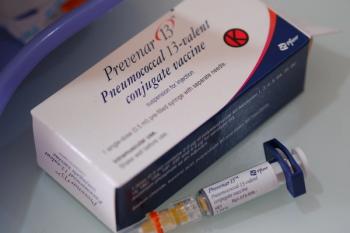
ACIP Updates Flu Vaccine Recommendations
Standout updates include a relaxed recommendation for patients with a history of egg allergies, and that all available influenza vaccines for the 2023 to 2023 flu season are quadrivalent.
The Advisory Committee on Immunization Practices (ACIP) has released updated recommendations regarding influenza vaccination. According to a press release from the American Academy of Family Physicians (AAFP),1 health care professionals can choose from up to 9 different influenza vaccines for the upcoming 2023 to 2024 flu season.
In estimates from the 2019 to 2020 flu season, the CDC stated influenza vaccines “averted 7 million illnesses, 3.4 million medical visits, 100,000 hospitalizations and 7100 deaths.”
Among the newly-published recommendations, approved by the AAFP, one stand out is for patients with any history of an egg allergy, regardless of severity. These patients can receive any influenza vaccine, whether it is egg-based or non-egg-based, so long as it is otherwise appropriate for their age and health status. No additional safety measures, beyond measures recommended for any vaccine, are no longer called for.
Annual, routine vaccination is recommended for those aged 6 months and older, who do not have contraindications to vaccination. Vaccination should focus on people at an increased risk for complications from severe influenza who have no contraindications, should supplies become limited.
All influenza vaccines available in the United States for the 2023-2024 flu season are quadrivalent. Below are the vaccines and corresponding approved age ranges for each. Depending on patient age, Afluria Quadrivalent “is to be administered in different doses and methods.”
- Afluria Quadrivalent, Fluarix Quadrivalent, FluLaval Quadrivalent, Fluzone Quadrivalent and Flucelvax Quadrivalent: approved for those aged 6 months and older
- FluMist Quadrivalent: approved for those aged 2 to 49 years
- Flublok Quadrivalent: approved for those aged 18 years and older
- Fluzone High-Dose Quadrivalent and Fluad Quadrivalent: approved for those aged 65 years and older.
For children aged 6 months to 8 years who have not previously had 2 or more doses of trivalent or quadrivalent influenza vaccine 4 or more weeks apart, or for those whose vaccination status is unknown, 2 doses of influenza vaccine are required, given at least 4 weeks apart. It is recommended that these patients receive the first dose as soon as it becomes available. For children aged 8 years that need 2 doses, both doses should be administered “even if the child turns 9 before the second dose.”
More details on these recommendations are available on the CDC website.2
References
1. ACIP releases 2023-2024 influenza vaccine recommendations. The American Academy of Family Physicians. Press release. September 12, 2023. Accessed September 18, 2023. https://www.aafp.org/news/health-of-the-public/2023-acip-flu-recs.html
2. Grohskopf LA, Blanton LH, Ferdinands JM, Chung JR, Broder KR, Talbot HK. Prevention and control of seasonal influenza with vaccines: Recommendations of the Advisory Committee on Immunization Practices — United States, 2023-24 influenza season. MMWR Recomm Rep. 2023;72(No. RR-2):1-25. doi:10.15585/mmwr.rr7202a1
Newsletter
Pharmacy practice is always changing. Stay ahead of the curve with the Drug Topics newsletter and get the latest drug information, industry trends, and patient care tips.





























































































































